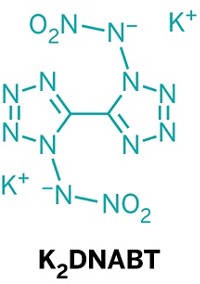Advertisement
Grab your lab coat. Let's get started
Welcome!
Welcome!
Create an account below to get 6 C&EN articles per month, receive newsletters and more - all free.
It seems this is your first time logging in online. Please enter the following information to continue.
As an ACS member you automatically get access to this site. All we need is few more details to create your reading experience.
Not you? Sign in with a different account.
Not you? Sign in with a different account.
ERROR 1
ERROR 1
ERROR 2
ERROR 2
ERROR 2
ERROR 2
ERROR 2
Password and Confirm password must match.
If you have an ACS member number, please enter it here so we can link this account to your membership. (optional)
ERROR 2
ACS values your privacy. By submitting your information, you are gaining access to C&EN and subscribing to our weekly newsletter. We use the information you provide to make your reading experience better, and we will never sell your data to third party members.
Environment
TATP and terrorism
May 2, 2016
| A version of this story appeared in
Volume 94, Issue 18
Almost 40 years ago, in early 1977 while I was working as a research chemist at a veterans’ hospital in Minneapolis, I was supposed to prepare both optical isomers of pentobarbital. The reaction mixture yielded an unwanted mystery product with a melting point of 95 °C.
By a rare coincidence, a few days later C&EN published an account of an accidental explosion in Finland caused by triacetone triperoxide (TATP) under the headline “Violent Explosion” (Feb. 21, 1977, page 5). Most of the TATP was lost in the explosion, yet enough was collected to fully identify it. Since then, TATP has been used by the “shoe bomber” Richard Reid and also in the recent terrorist attacks in Brussels (C&EN, April 11, page 17), where the terrorists had 150 L of acetone that emanated an unpleasant odor that any sniffing organic chemist could identify.
It turns out my mystery product from the veterans’ hospital in Minneapolis was actually TATP, which is unstable and explodes on impact. I had isolated only a minute quantity from a mixture containing hydrazine, a known rocket propellant. So an explosion could have been huge and would surely have ended my employment at the hospital if had I survived.
I reported this, and it was published shortly thereafter in C&EN under the headline “Potential Explosion Forewarned” (May 23, 1977, page 4).
Yul Yost
St. Paul



Join the conversation
Contact the reporter
Submit a Letter to the Editor for publication
Engage with us on Twitter